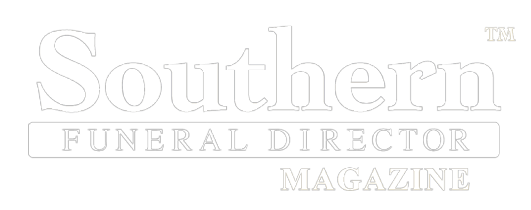(404) 312-6640
Safety is Not a Luxury for Funeral Homes and Cemeteries
With inflation and rising costs continuing to affect both businesses and the families we serve, it’s easy to see why some funeral homes and cemeteries hesitate to prioritize safety. Whether it’s launching a formal training program or implementing software to track compliance and recordkeeping, these initiatives require an investment of time and resources. When every dollar is under scrutiny, safety can start to feel like an expense rather than a necessity. But the reality is investing in safety is one of the smartest financial decisions a funeral home or cemetery can make. The upfront costs of better training, improved technology, and streamlined recordkeeping pale in comparison to the financial and operational consequences of workplace injuries, employee turnover, and rising insurance premiums.
THE HIDDEN COSTS OF NOT INVESTING IN SAFETY
When safety takes a back seat, the risks—and costs—quickly add up. For funeral homes and cemeteries, accidents don’t just cause harm to employees; they disrupt operations, damage reputation, and create long-term financial strain.
INJURIES ARE EXPENSIVE—AND THEY ADD UP FAST
A back injury while lifting a casket, a fall while working on a mausoleum, or an accident with heavy equipment in the cemetery doesn’t just impact the employee—it’s a financial burden on the entire organization. Direct costs include medical bills, workers’ compensation claims, and lost labor hours. Indirect costs include delayed services, reduced productivity, and the toll on staff morale.
HIGHER INSURANCE PREMIUMS
Insurers pay close attention to safety records. Poor safety performance can lead to higher workers’ comp premiums, liability insurance hikes, and, in some cases, challenges with renewing coverage. By contrast, a strong safety program can actually lower long-term insurance costs.
LAWSUITS AND FINES
Accidents in this industry can carry heavy legal consequences. OSHA fines, liability lawsuits, and related legal fees can far exceed the cost of implementing a strong safety program. Even if a case is resolved in your favor, the damage to your reputation—and the time spent managing legal challenges—can’t be ignored.
WHY SAFETY INVESTMENTS PAY FOR THEMSELVES
The good news is that safety investments aren’t just about avoiding risks—they actually strengthen your business. Funeral homes and cemeteries that prioritize safety see fewer disruptions, lower costs, and stronger long-term sustainability.
FEWER INJURIES = LOWER COSTS
Every injury prevented means less downtime, fewer claims, and lower insurance expenses. For example, funeral service providers that implement proper lift-assist devices and training programs report fewer musculoskeletal injuries, which translates to significant cost savings over time.
INCREASED PRODUCTIVITY AND RETENTION
Safe workplaces are efficient workplaces. When employees feel protected, they focus better and perform their work without fear of injury. A strong safety culture also helps retain skilled staff in an industry where employee turnover can be costly and disruptive.
SAFETY TECHNOLOGY STREAMLINES COMPLIANCE
Many firms hesitate to invest in safety because they fear it will slow down operations. However, with on-demand modern safety software is actually easier and faster than relying on scheduled in-person training, paperwork, and reactive measures. Technology helps funeral homes and cemeteries proactively manage risks, keeping teams safe and operations smooth.
FINAL THOUGHTS
With costs rising across the funeral service industry, it’s natural to look for ways to control spending. But cutting corners on safety isn’t the answer. In fact, safety is one of the most cost-effective investments you can make. The organizations that thrive won’t be those that cut back on safety to save a few dollars today—they’ll be the ones that invest in smarter, more efficient ways to protect their employees, avoid costly accidents, and ensure families receive uninterrupted, high-quality service.






Comments